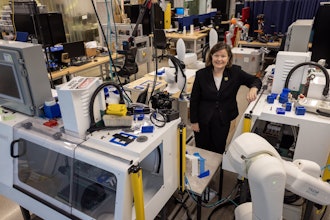Rather than making predictions about the economic conditions that will prevail this year, I feel that companies, particularly US-based manufacturers and distributors, must take aggressive steps to impact the nation’s economy and strive to actively shape their own destinies in 2012.
I have thought long and hard about the state of our economy going into 2012 and what needs to be done. Throughout 2011, I got involved in a few prominent organizations and made advocacy trips to Sacramento with Tech America and to Washington, DC with CompTIA. I am in full support of promoting U.S. companies, but at the same time understand that we are part of a global economy where labor and manufacturing costs may be cheaper elsewhere. So, rather than making predictions about the economic conditions that will prevail this year, I feel that companies, particularly US-based manufacturers and distributors, must take aggressive steps to impact the nation’s economy and strive to actively shape their own destinies in 2012.
As we near the 50th anniversary of the assassination of President John F. Kennedy, I am reminded of his famous statement – “Ask not what your country can do for you, but what you can do for your country.” In many respects, I feel Kennedy’s statement is applicable to the world of business today. Rather than just waiting for our government to give handouts or enact potential protective and other legislation to boost the fortunes of U.S.-based companies, the onus in many ways is upon us to be the driving force. As I have stated many times before, there is a way for many companies to be more competitive by adopting the technology necessary to facilitate more accurate and timely decision-making, as well as maximize operational efficiencies. This can help outpace foreign competitors who have had issues around visibility, especially with late deliveries and poor product quality. At the same time, the impact and use of modern technology has the ability to contribute to more innovation which can spur an economic turnaround in the United States at a time when we are in need of a significant boost.
There is a lot to be gained from maximizing data availability and mining it to gain the relevant information needed. The better utilization of information is power in business. Companies must become increasingly more advanced in the ways all levels of management can access such information to make more timely, effective, and impactful decisions. It should be recognized that Dashboards are no longer designed just for executives, but are enabling management and staff with the ability to access dynamic business views. Bear in mind that there is no illusion with this given the increasing reliance and demands on real-time data required to make faster, more knowledgeable, and proficient operational decisions. This can only be achieved when the correct technology solutions are in place, being used, and monitored for optimal use. It is common sense that this ability to make expedient and efficient decisions can help create growth and profits as well as bring competitive advantages.
The utilization of mobile devices, such as smart phones and computer tablets, are good examples of enabling faster “on the go” access to information that can help in highly effective decision making. These mobile communications not only facilitate better intra-company communications, but also inter-company exchanges with trading partners and customers. This is often portrayed by the ability of personnel to trace orders and shipments remotely, which then significantly elevate levels of customer service across the enterprise. The use of mobile devices is well supplemented by ERP systems and particularly the Customer Relationship Management (CRM) component that also enhances interactions through alerts and tracking of conversations.
Manufacturers and distributors of all sizes should seek sophisticated software tools to manipulate company and industry data and facilitate accurate forecasting to lean both current and future operations. Obviously the goal is to maintain sufficient inventories to meet demand and sustain customer service – but not to be caught in the deficit-producing situations of past that saw the build-up of excessive inventories during periods of weak demands. Given the rapid advancement of software technology over the past few years, these companies can utilize available technology to concentrate on building highly efficient supply chains, enhancing throughput and operational flexibility. This enhanced supply chain visibility greatly maximizes supply chain controls.
It is interesting that the primary reason given for the migration of manufacturing jobs to countries such as China and India is, of course, the abundance of cheap labor. While many pundits look upon this migration as inevitable and unstoppable, there are those who feel otherwise. Some are advocating tax incentives to keep manufacturing operations in the United States, while others are calling for federal legislation to halt the outflow of manufacturing jobs.
Unfortunately, these proposed remedies neglect to mention one solution – technological innovation. Many forget that the United States has been on the forefront of technology since the nineteenth century. The electric light was invented in the U.S., as was the telephone. The transistor was developed in the United States, paving the way for the subsequent development of the integrated circuit and huge industries surrounding the personal computer. The United States was the first country to put a man on the moon.
Truly, technological innovation has been a driving force for U.S. manufacturers. However, technology, alone, does not account for the growth of industry in the U.S. It is the coupling of technology with an indomitable entrepreneurial spirit that has made the U.S. the leading industrial nation in the world. It is now time to re-apply the formula of this spirit and technology to bring new levels of efficiency to the manufacturing process to expand the industrial base in America.
All in all, I still believe the future for U.S. manufacturers is very promising. The availability of integrated, modern software, such as that offered by SYSPRO, put into practice by a crop of schooled, technologically-savvy individuals will provide the synergy for US midmarket companies to regain much of the competitive edge that was lost during the current economic downturn.


















